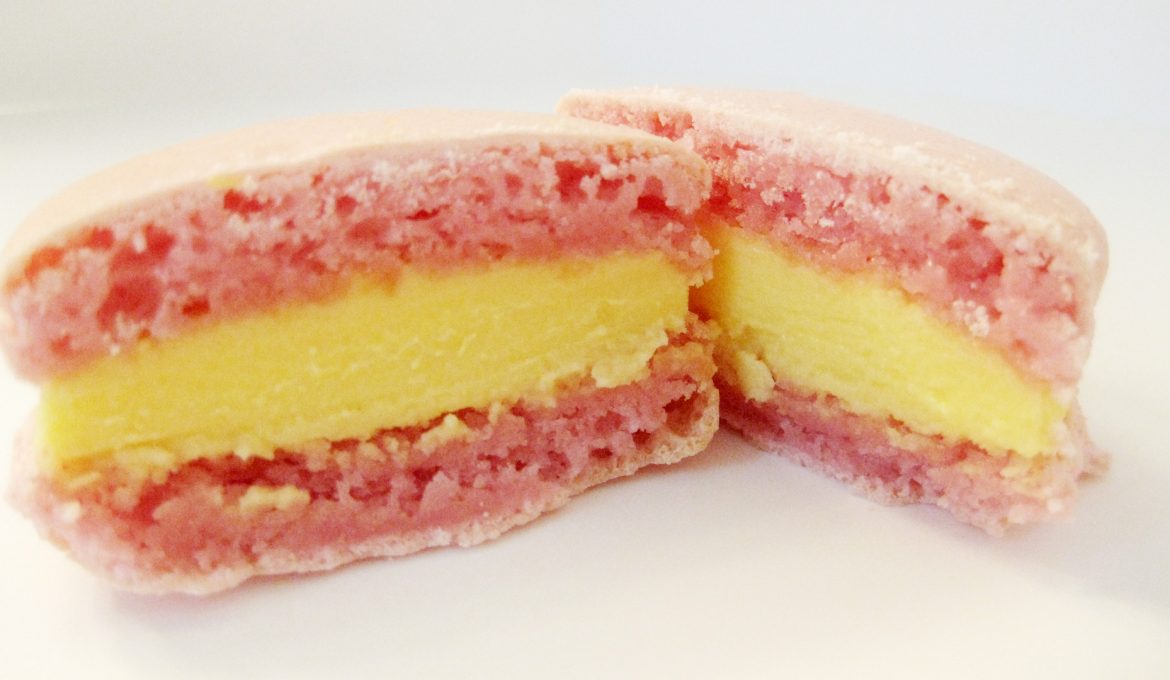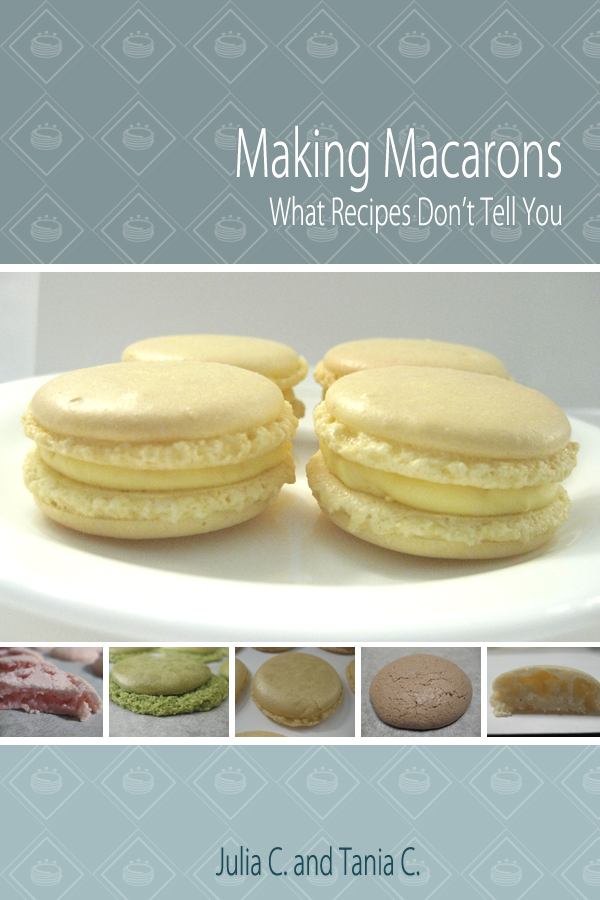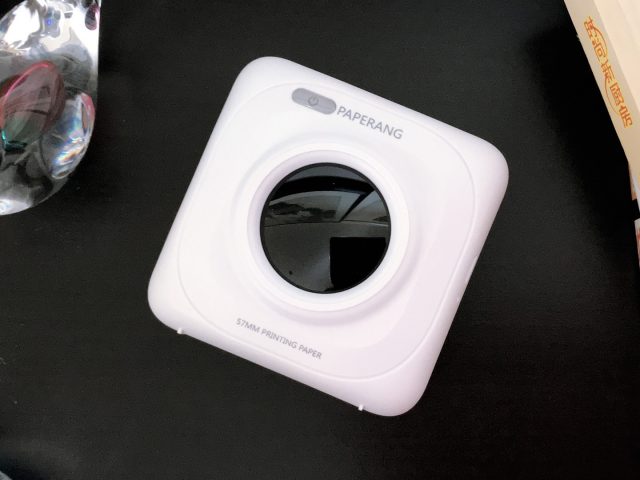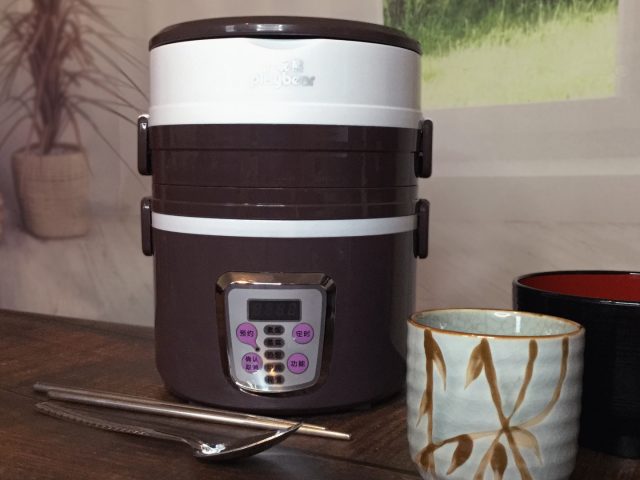Our final blog post in this special feature macaron blog series, Macarons: Quest For Perfection talks about the Italian Meringue vs the French Meringue method of macarons.
The Italian Meringue method of making macarons has its perks, but we are definitely fans of the French Meringue method of making macarons because of its relatively less complicated method. However, as the French meringue and Italian meringue differs, there are good and bad points in each method and the resulting look of the macarons.
The Italian Meringue requires an extra step of the sugar syrup (made with just sugar and water) to which needs to reach a certain temperature and be timed well with the whipping egg whites. The Italian meringue requires good time management. Because of this, you will either need a second person to help or a stand mixer so that you can make the sugar syrup and whip the egg whites at the same time. Otherwise, it’d be quite a juggling act trying to do both the sugar syrup and whipping the egg whites at the same time with a hand mixer. This extra step of making the sugar syrup makes the process more complicated.
The French Meringue method does not require the timing that is required for the Italian Meringue and it doesn’t require the extra step of making the sugar syrup. It only uses the four main ingredients: egg whites, ground almonds, caster sugar and icing sugar. The process is relatively easier.
Stability
The Italian Meringue produces a more stable meringue and for this reason it is not as easily to mess up or affected by environmental factors. The French meringue method is very sensitive to environmental factors and poor technique.
Skill
Though the process involved in the Italian Meringue method is comparatively more complicated than the French Meringue method, the required skill/technique and understanding of the importance of good technique and other factors that affect macaron making is much higher for making macarons using the French meringue. The more stable meringue of the Italian Meringue allows room for error, while there is very little room for error with the more unstable French meringue.
Appearance
Some have said that the Italian Meringue produces better looking macarons than ones made with the French Meringue, but we say that you can produce some good-looking macarons with the French Meringue, too. Below are some examples of macarons we have made using the French Meringue and the Italian Meringue. The recipes we chose were randomly chosen online that have been found to work very well by others.
Macarons – French Meringue Method

Macarons using the French Meringue method. The feet is more ruffled than ones made with the Italian Meringue method.

Another example of macarons using the French Meringue method. Notice how the feet can be straight up and down with the French Meringue method also? It is of course still ruffled.
Macarons – Italian Meringue Method

Macarons using the Italian Meringue method. The feet is very straight.
The images show that you can produce pretty good-looking macarons with both methods. It’s just easier to produce good-looking macarons consistently with the Italian Meringue method and that’s because of the higher stability of the Italian meringue. With the French Meringue method, you will more likely to fail because of the relatively more unstable nature of the French meringue.
Below, we compare some similarities and differences between the two methods:
Texture
The Italian Meringue method produces fuller, more compact interiors than the French Meringue. The compactness of the Italian meringue macaron interiors means they aren’t as light and airy or melt-in-the-mouth as macarons made with the French Meringue.
Texture – French Meringue Method

Interiors of macarons using the French Meringue method is often not as full and compact as macarons using the Italian Meringue method.
Texture – Italian Meringue Method

Interiors of macarons using the Italian Meringue method is very full and compact.
Vibrancy
The colors of the shells are much more vibrant in the Italian Meringue macarons.
Shell Thickness
The Italian meringue has a relatively thicker shell, but only slightly and sometimes the difference is unnoticeable. We’ve noticed that with macarons using the French meringue method, the shell can get similar to a sheet of ice. When bitten into, it has a very delicate crunch and shatters into very tiny pieces—so delicate and thin that the tiny broken pieces angle into the filling, but not pierce into it. We’ve not come across an Italian Meringue macaron with a shell as delicate.
Feet
The feet is straighter and inline with the shell with macarons made with the Italian meringue (example image can be found above under Macarons – Italian Meringue Method). It is possible to get the straight-up-and-down feet in the French meringue macarons but that requires all factors that affect successful macaron making to be in balance—technique, environmental factors and oven (in depth discussion of all these can be found in our eBook, “Making Macarons: What Recipes Don’t Tell You”).
Success Rate
There is less disappointment of failure with the Italian Meringue method as it allows more room for error. The examples of the Italian Meringue macarons we’ve shown (all the Italian Meringue macaron images above) are from our second attempt of Italian Meringue macarons. Our first attempt were produced under high humidity and had idle whipped up egg whites sitting and waiting ready for around a minute for the sugar syrup to reach the correct temperature. It was not perfect, but good:
Italian Meringue Macarons – Exterior and Interior

Overall, a perfect-looking exterior except for the shell lacking shine; it is dull.

Full interior, however has a thicker shell than what’s called perfect.

Some collapsed interiors. This image shows a large chunk of shell piercing into the filling and demonstrates what a shell—Italian meringue or French meringue alike—should not be.
This shows how slight errors won’t ruin a batch with the Italian Meringue method. The French Meringue method will not allow for error as even slight errors will show up very visibly in the macarons—collapsed interiors/hollowness, weak shells, splattered feet or even no feet and cracked shells.
Final Words
The French Meringue method of making macarons requires less fuss and we choose it because of that reason. Not only that, but the French meringue macarons, in our opinion tastes better simply because it does produce a more lighter and airier macaron with a more delicate shell.
If we were to advise which method to use for beginner macaron makers, we would suggest the Italian Meringue method because of the stability of the meringue that the method produces. That extra stability created from the extra step of the sugar syrup allows much more room for errors, so the extra step of getting the sugar syrup to the exact temperature and timing it perfectly with the whipping egg whites is worth it if it means that you get macarons coming out of the oven looking like macarons. Getting a candy thermometer to make sure the sugar syrup reaches to the correct temperature and timing it with the egg whites is an easier thing to learn than understanding and balancing all the factors that affect macarons, required to produce perfect macarons using the French Meringue method.
We found no trouble picking up the Italian meringue method of making macarons after learning how to make macarons using the French meringue method. We don’t think the transition would have been so easy if we started out making macarons using the Italian Meringue method. The constant failure with the French meringue method would have had us give up and revert back to using the more stable and less disappointing method that is the Italian Meringue method of making macarons.
This concludes our “Macarons: Quest for Perfection” blog series. Please check out our eBook on macaron making, “Making Macarons: What Recipes Don’t Tell You”. It is a book discussing the factors that affect macarons and provides tips and recommendations as well as a troubleshoot guide. Purchase a copy of this eBook and arm yourself with the knowledge and produce perfect macarons consistently. Or, maybe you have been following our macaron blog series and want to show your appreciation by either purchasing a copy or help us spread the word about our eBook to other macaron makers having trouble turning out perfect macarons. Direct them to our eBook information page: http://www.juliaandtania.com/publications/mmwrdty/.
That’s a wrap!
Julia and Tania. : o) : o).
See our other posts in Macarons, Quest for Perfection blog series:
Macarons, Quest for Perfection – Recipe, Method, Environment and Equipment
Macarons, Quest for Perfection – Technique, Macaronnage
Macarons, Quest for Perfection – Drying Time
Macarons, Quest for Perfection – Oven
ADVERTISEMENT






